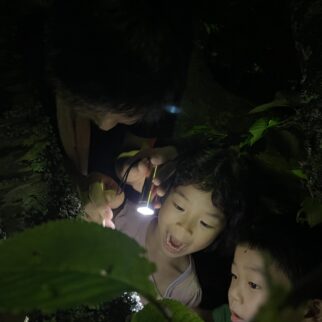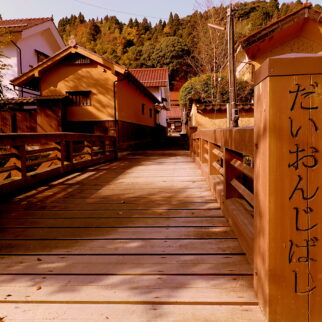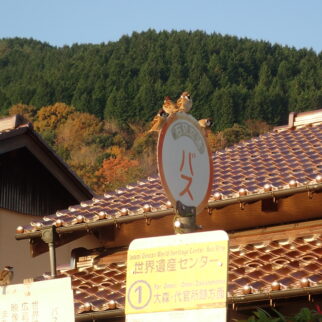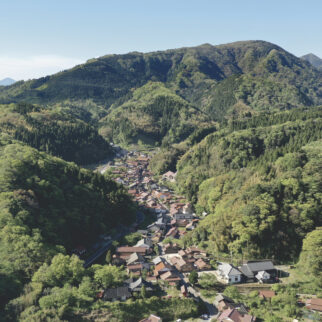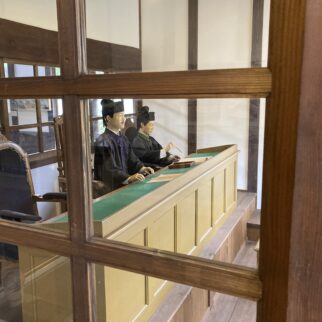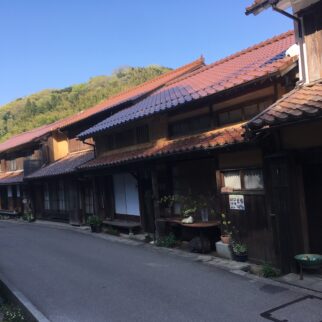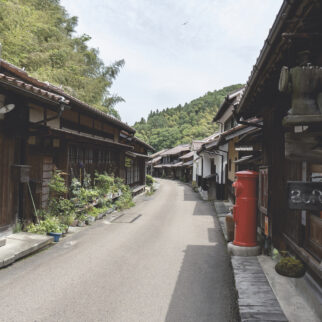 Iwami Ginzan Silver Mine site
Iwami Ginzan Silver Mine site
created by a volcano


A place that prospered as a mining town
Omori Silver Mine Area



Established as a mining town for the Iwami Ginzan Silver Mine, Omori-cho is lined with rows of houses with red roof tiles along the valley where the Ginzan River flows. The townscape, which has the layout of the Edo period, retains the atmosphere of the past, even as the people conduct their modern lifestyles. In the Edo period, the Omori Magistrate's Office (Omori Daikansho) was located here, and it was the political and economic center of the Iwami Ginzan Silver Mine territory under the direct control of the shogunate.
In addition to the Fukuishi silver ore that was formed by volcanic activity and brought about the prosperity of the Iwami Ginzan Silver Mine, the green tuff created by volcanoes during the formation of the Japanese archipelago was widely used as building material in the townscape, and the stone walls and other structures made of carefully cut stones create an orderly scene. Quarrying was carried out even within the townscape, and the remains of those stone quarries that can still be found in various places create a unique atmosphere.
Established as a mining town for the Iwami Ginzan Silver Mine, Omori-cho is lined with rows of houses with red roof tiles along the valley where the Ginzan River flows. The townscape, which has the layout of the Edo period, retains the atmosphere of the past, even as the people conduct their modern lifestyles. In the Edo period, the Omori Magistrate's Office (Omori Daikansho) was located here, and it was the political and economic center of the Iwami Ginzan Silver Mine territory under the direct control of the shogunate.


- 1Iwami Ginzan Silver Mine territory
- The eastern part of Iwami, around present-day Oda City, and the main mines of Sasagatani (Tsuwano Town), Nichihara (Tsuwano Town), Tsumo (Masuda City), and Kuki Obayashi (Onan Town) were under the direct control of the shogunate (designated as “imperial lands”).











